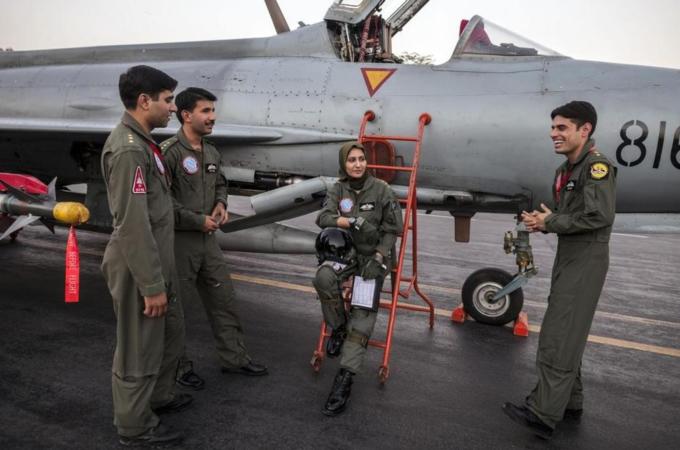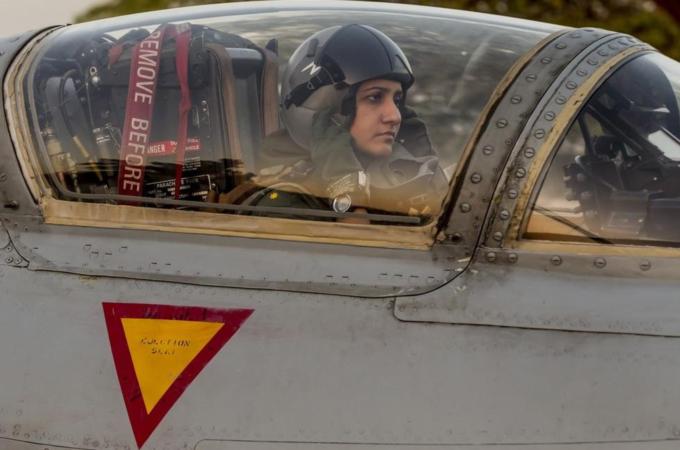China-Pakistan Energy Corridor
Asif Haroon Raja
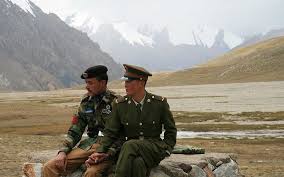


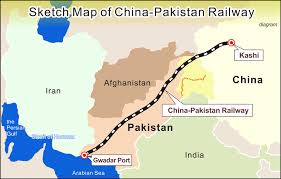

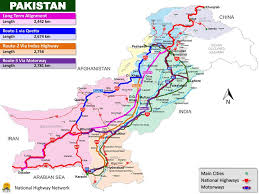

Establishment of China-Pakistan Economic Corridor (CPEC) was first proposed by Chinese Premier Li Keqiang during his visit to Pakistan in May 2013. Li stated, “Our two sides should focus on carrying out priority projects in connectivity, energy development and power generation”. At that time, Pak-China bilateral trade had reached $12 billion. The proposed project of linking Kashgar in northwest China with Gwadar Port on southwestern Arabian Sea coastline in Baluchistan was approved on July 5, 2013 during the visit of PM Nawaz Sharif to Beijing, which included construction of 200 km long tunnel. In December 2013, China committed $6.5 billion for the construction of a major nuclear power project in Karachi. In May 2014, another agreement was signed to start Orange Line metro train project in Lahore worth $1.27 billion. In November 2014, the two countries signed 19 agreements related to CPEC. In addition, Chinese firms started work on six mega power projects in Gilgit-Baltistan such as Dassu, Phandar, Bashu, Harpo, Yalbo to tackle Pakistan’s energy crisis.
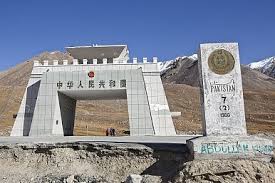
Originally scheduled to come on September 14-16 last year, China’s President Xi Jinping’s visit was postponed in the wake of prolonged anti-government protests in Islamabad and security concerns, and the government not wanting anything untoward happening. Postponement of the visit was seen by the government as a big setback since it entailed investment of $26 billion in Pakistan. Onus of postponement was squarely put on the shoulders of those indulging in futile dharna politics. This setback was not an ordinary one when seen in the backdrop of worst ever energy crisis, economy in shambles, state corporations in decay and all economic indicators in negative – thanks to the inglorious five-year rule of PPP led coalition. Cash-strapped Pakistan struggling to finance energy projects from western donors couldn’t afford a single day delay.
Operation Zarb-e-Azb which started in mid June 2014 in North Waziristan after the brazen terror attack on Jinnah airport in Karachi and peace talks having fallen apart was put in top gear after the gruesome tragedy in Peshawar Army Public School on December 16, 2014. Its scope was spread all over the country and cooperation with Afghanistan was greatly improved. Rangers-Police intelligence based targeted operation in Karachi was also speeded up and so was Frontier Corps-Police operation in Baluchistan. These efforts were backed by National Security Policy, Counter Terrorism Policy, Joint Intelligence Directorate to coordinate efforts of 33 intelligence agencies, formation of Counter Terrorism Force at federal and provincial levels, lifting of moratorium on hanging of convicts, setting up of military courts and focussed 20-point National Action Plan, all in a bid to eliminate the scourge of terrorism.
Brilliant successes against terrorism and extremism, which raised the stature of Pak Army backed by air force very high among the international comity, helped in further enhancing the confidence of China’s leadership in Pakistan. Well aware of Indo-US encirclement plan and shifting of Ameica’s pivot to Asia-Pacific to contain China, the latter wanted an early opening into world market to become an unchallenged economic giant as well as the super power. Mindful of the under developemnt of its western province which is its soft belly and ongoing Uighur movement, China wants speedy modernisation of Xingjiang to bring it at par with eastern provinces. For the accomplishment of these dreams, China needs access to warm waters in Arabian Sea through Gwadar since this route is the shortest and the cheapest. This access was never granted to Russia. With this objective in view, President Xi Jinping undertook a visit to Islamabad and pleasantly surprised the Pakistanis by raising the level of investment from $ 26 billion to $ 45 Billion in Pakistan.
Pakistanis opened their hearts to welcome the worthy guest. During his two-day historic visit (April 20-21, 2015), President Xi signed 51 agreements/MoUs worth $28 billion, with $17 billion in pipeline spread over 15 years. His visit achieved the milestone of the groundbreaking of historic 3,000 km-long strategic China-Pakistan-Energy-Corridor (CPEC). It includes $ 18 billion worth energy projects such as coal, solar, hydroelectric power projects which will inject 10,400 MW electricity in the national grid by 2017/18, laying down fibre optic cable from Xingjiang to Rawalpindi, 1240 km long Karachi-Lahore motorway, metro and bus service in six major cities, up gradation of 1300 km long Karakorum Highway (first opened in 1978), oil/gas pipelines, commercial sea-lanes and host of other projects.
The CPEC project will include building new roads, a 1,800-km railway line and a network of oil pipelines to connect Kashgar in China’s western Xinjiang region to the seaport of Gwadar. It includes a string of energy projects, special economic zones, dry ports and other infrastructure. China is helping Pakistan in producing plutonium at Chinese built Khushab reactor and will also sell 8 submarines worth $5 billion, which will give a quantum jump to Pak Navy’s sea capability.
Gwadar, once a part of Oman before it was sold to Pakistan in 1958, is one of the least developed districts in Balochistan province. It sits strategically near the Persian Gulf and close to the Strait of Hormuz, through which 40 per cent of the world’s oil passes. Work on Gwadar deep-seaport had started in 2002 with China’s investment. In 2013, management of the seaport which was in the sloppy hands of Singapore PSA International was handed over to China’s Port Holdings. It is planned to develop Gwadar into free trade zone with a modern airport on the model of Singapore or Hong Kong and a gateway to CPEC. Some analysts perceive Gwadar port turning into China’s naval base in the Indian Ocean, enabling Beijing to monitor Indian and American naval activities and thus frustrating their ambition to convert the ocean into exclusive Indian lake. Modernization of Pak Navy by China is seen as a step in that direction.
Energy-poor Pakistan certainly seems to have found a saviour in China, which has promised to stand by the country in its dark hour (parts of the country suffer power cuts for up to 18 hours a day). Jubilant President Mamnoon Hussain predicted that the economic corridor will be a “monument of the century” benefitting “billions of people” in the region. Analysts believe that the CPEC has the potential to radically alter the regional dynamics of trade, development and politics. They say the projects conceived under CPEC will ease Pakistan’s energy shortages and make a substantial difference in the long term with both generation and transmission covered. Some experts opine this initiative can bring greater cohesion in South Asia, one of the world’s least economically integrated regions. Adil Najam, Dean of the Boston University Pardee School of Global Studies, believes anything that binds the region together is “a good idea” since countries tend to focus on “zero-sum geostrategic posturing” rather than recognising the benefits of integration. MNA Ahsan Iqbal says “CPEC is a game changer for the entire region and will uplift the lives of about 3 billion people across China, Central Asia, South Asia and the Middle East”.

While the CPEC may be ‘monumental’ for Pakistan, for China it is part of more ambitious plans to beef up the country’s global economic muscle. Chinese officials describe the corridor as the “flagship project” of a broader policy — “One Belt, One Road” — which seeks to physically connect China to its markets in Asia, Europe and beyond. This initiative includes the New Silk Road which will link China with Europe through Central Asia and the Maritime Silk Road to ensure a safe passage of China’s shipping through the Indian Ocean and the South China Sea. “China is not building the corridor as an act of charity for Pakistan. It will happily fund and build any structure that plays into this goal – whether we’re talking about roads or ports”, says Michael Kugelman, a senior associate at the Washington DC based Woodrow Wilson Centre. Access to Indian Ocean via Gwadar will enable China’s naval warships and merchant ships to bypass Malacca Strait.
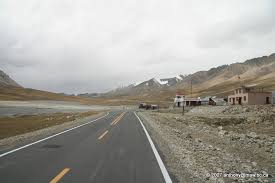
At the same time, the new silk roads are bound to intensify ongoing competition between India and China –and to a lesser extent between China and the US – to invest in and cultivate influence in the broader Central Asian region. Kugelman stated, “India has long had its eyes on energy assets in Central Asia and Afghanistan, even as China has gobbled many of these up in recent years. The US has announced its own Silk Road initiative in the broader region”. India is concerned about China’s huge investment in Pakistan, particularly its recent decision to fund a new batch of nuclear reactors. Pakistan plans to add four new nuclear plants by 2023, funded by China, with four more reactors in the pipeline (adding up to a total power capacity of 7,930 MW by 2030). India and other detractors of Pakistan are propagating that China is supplying nuclear technology to Pakistan in defiance of the Nuclear Suppliers Group (NSG) guidelines, which forbid nuclear transfer to Pakistan as it has not signed the Nuclear Nonproliferation Treaty. China argues that these projects were agreed with Pakistan before it became a member of NSG in 2004.
Pakistan has remained under a dark star for a long period; it has bravely sailed past the period of trials and tribulations but at a very heavy cost. Pakistan has acted as the frontline state against the Soviets and against global terrorism and suffered enormously, but in the process it allowed China 35 free years to develop and prosper. Landmark CPEC has further cemented Pak-China relations and made them natural allies. China’s liberal investment which surpasses all foreign investments in Pakistan in the past are based on trust, confidence and convergence of interests and both are in a win-win cooperation. The all-weather, time-tested friends share common vision and seek peace and not confrontation. They have entered into a new era of geo-economic relationship and plan to boost two-way trade to $20 billion.
The Silk Road Economic Belt will not only connect and develop China and Pakistan but also the regional countries for the first time and promote peace. It has opened vista of great opportunities for Pakistan and will greatly help in poverty alleviation, overcome unemployment, remove inequities of smaller provinces and help Pakistan in becoming the next Asian tiger. Strategic economic moment for Pakistan has arrived and interesting part is that Pakistan has assumed the position of economic pivot for the whole region. This paradigm shift in circumstances is a cause of great worry for the enemies of Pakistan both within and outside. They have put their heads together to work out new strategies how to block the forward march, but time and tide is not in their favor.
The writer is a retired Brig/defence analyst/columnist/author of five books, Member Executive Council PESS, Director Measac Research Centre, Director Board of Governors TFP. asifharoonraja@gmail.com




